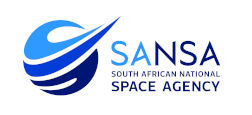Timeline
- SANSA
- Timeline
Prof A Ogg, at the University of Cape Town (UCT), is requested to establish a magnetic observatory in Cape Town by the International Commission for the Polar Year.
Hermanus Magnetic Observatory established and begins recording data.
Hermanus Magnetic Observatory participates in the International Geophysical Year (IGY)
Hartebeesthoek becomes one of NASA’s 14 Satellite Tracking and Data Acquisition Network (STADAN) stations established around the globe
Hermanus Magnetic Observatory formed part of the first South African Antarctic Expedition (SANAE 1) in 1960, when South Africa took over the Norwegian Station and assumed responsibility for magnetic and auroral observations
Joburg STADAN recorded the telemetry data of the Syncom 1 launch, unscheduled by NASA. Soon after the recording was made, all transmissions from Syncom 1 ceased abruptly and the data recorded by Hartebeesthoek were the only available of that critical period when the apogee rocket is fired to place the satellite into a geostationary orbit. The unscheduled recording enabled NASA to rapidly and with certainty determine the cause of the failure and allowed Syncom 2 to launch on schedule.
Hermanus Magnetic Observatory participates in the International Quiet Sun Year (IQSY)
The Hermanus Magnetic Observatory is incorporated into the Council for Scientific and Industrial Research (CSIR) as an independent research unit.
NASA withdraws operations from the Joburg STADAN station due to political instability in South Africa
The CSIR establishes the Satellite Remote Sensing Centre (SRSC) at Hartebeesthoek with a small group of people from the Joburg STADAN station and the equipment abandoned by NASA.
Hermanus Magnetic Observatory participates in the International Magnetospheric Study (IMS)
First images received from Meteosat 1, a European geostationary meteorological satellite, resulting in the birth of the satellite remote sensing centre (SRSC) at Hartebeesthoek.
French National Space Agency (CNES) tracking station at Hammanskraal outside Pretoria is relocated to Hartebeesthoek and integrated with the SRSC.
SRSC renamed the Satellite Applications Centre (SAC). Major upgrade to provide the SAC with capabilities to receive imagery, process it and archive from earth observation satellites transmitting high resolution imagery in the “X” band. This enabled SAC to receive high resolution data from the American Landsat series and the French SPOT series earth observation satellites
Hermanus Magnetic Observatory incorporated into the National Research Foundation.
South African National Space Agency Act is passed
South Africa’s second satellite, SumbandilaSat, is launched through a collaboration between Stellenbosch University, the CSIR, and SunSpace. The SAC at Hartebeesthoek was responsible for operations, TT&C, and data capture, and the satellite collected weather and earth observation data.
The South African National Space Agency is launched by Minister Naledi Pandor to unify South Africa’s efforts in space science, technology and research under one banner.
Minister Naledi Pandor launched the SANSA Space Weather Centre at the SANSA Space Science Directorate in Hermanus.
SumbandilaSat loses its primary functions due to a solar storm. The satellite has completed over 9 000 orbits and SANSA has monitored in the region of 1 300 passes. The payload produced good quality images, some of which have contributed to the European GMES programme.
Development begins on South Africa’s next Earth observation satellite (EO-Sat1).
The new SANSA digital HF radar is installed at SANAE IV in Antarctica, forming part of an international network of SuperDARN radars which monitor the near-Earth space environment.
SANSA Space Weather Centre provides regular and high-calibre monitoring and warning to stakeholders across the African continent during the period of Solar Maxima.
SANSA’s launches southern Africa’s only non-magnetic temperature chamber to help spacecraft manufacturers improve the craft navigation.
SANSA installs a state-of-the-art Optical Space Research Laboratory (OSR) at the South African Astronomical Observatory (SAAO) in Sutherland to provide space science data to meet national and international obligations, raise the standard of South African research, supply information about the Earth’s middle and upper atmosphere and enhance scientific development.


